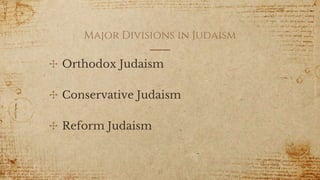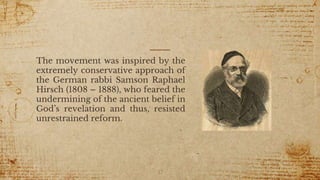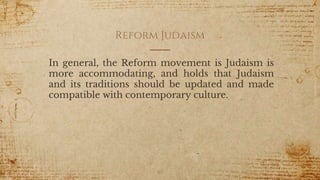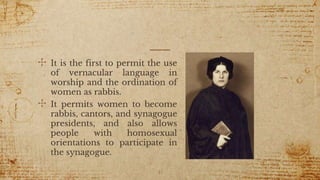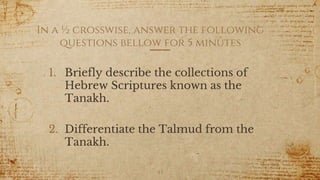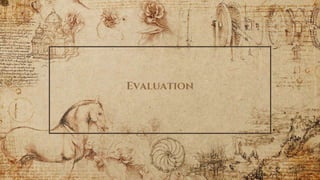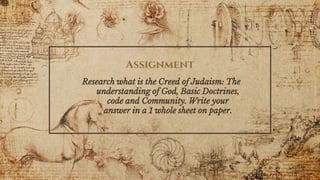Judaism began as the religion of the ancient Hebrews around 1800 BCE, originating from the call of Abraham and codified in the Torah and the covenant with God through Moses. The core texts of Judaism are the Torah, Nevi'im, and Ketuvim which make up the Tanakh, and the religion's major divisions are Orthodox, Conservative, and Reform Judaism which have differing views on traditions and modernization. The document provides historical context on the origins and development of Judaism from Abraham to the present day.
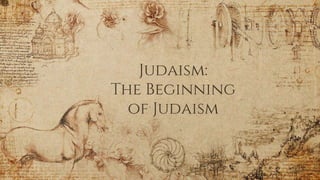
![“Sh’ma, Yisra’el! Adonai Eloheinu,
Adonai echad [Hear, Isra’el! Adonai our
God, Adonai is one]; and you are to love
Adonai your God with all your heart, all
your being and all your resources.”
-Deuteronomy 6:4-5, Complete Jewish Bible [CJB]
2](https://image.slidesharecdn.com/judaism-presentation-240108000945-9967943d/85/Judaism-Presentation-pptx-2-320.jpg)

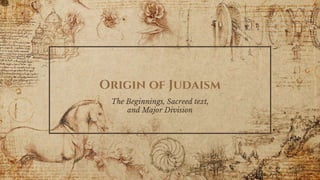
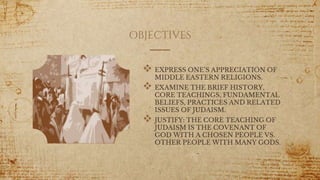
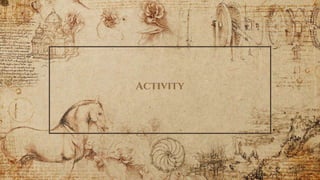


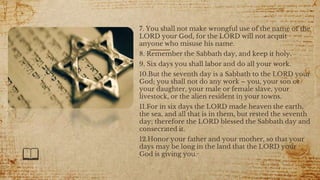






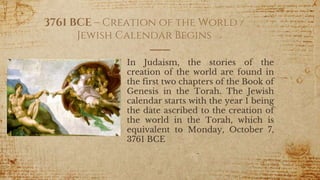
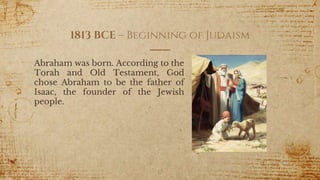
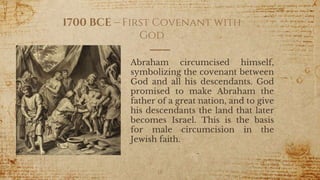

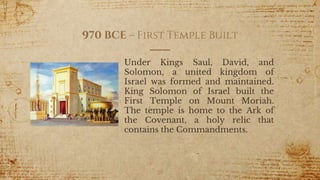





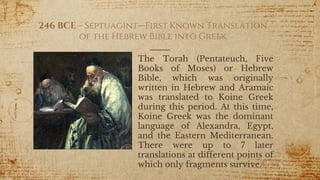
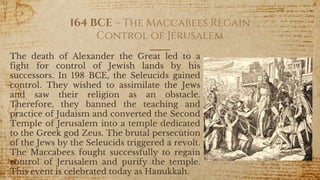
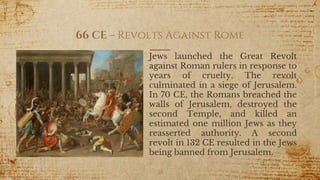

![Sacred Text
“The Torah Moshe [Moses] commanded us as an
inheritance for the community of Ya’akov
[Jacob/Israel]” (Deuteronomy 33:4, CJB).
30](https://image.slidesharecdn.com/judaism-presentation-240108000945-9967943d/85/Judaism-Presentation-pptx-30-320.jpg)

![Nevi’im [Hebrew “Prophets”]
The second section of the
taNakh, is a continuous historical
narrative about the wavering
fidelity of the people of Israel to
the Covenant with Adonai,
accompanied by the messages of
God’s messengers.
32](https://image.slidesharecdn.com/judaism-presentation-240108000945-9967943d/85/Judaism-Presentation-pptx-32-320.jpg)
![Ketuvim – [Hebrew “Writings”]
It is a collection of eleven books comprising a
variety of material that were most likely
compiled by the time of the destruction of the
second temple in Jerusalem by the Romans. The
books of psalms, Proverbs, and Job consist of
poetry and pearls of worldly wisdom.
33](https://image.slidesharecdn.com/judaism-presentation-240108000945-9967943d/85/Judaism-Presentation-pptx-33-320.jpg)

